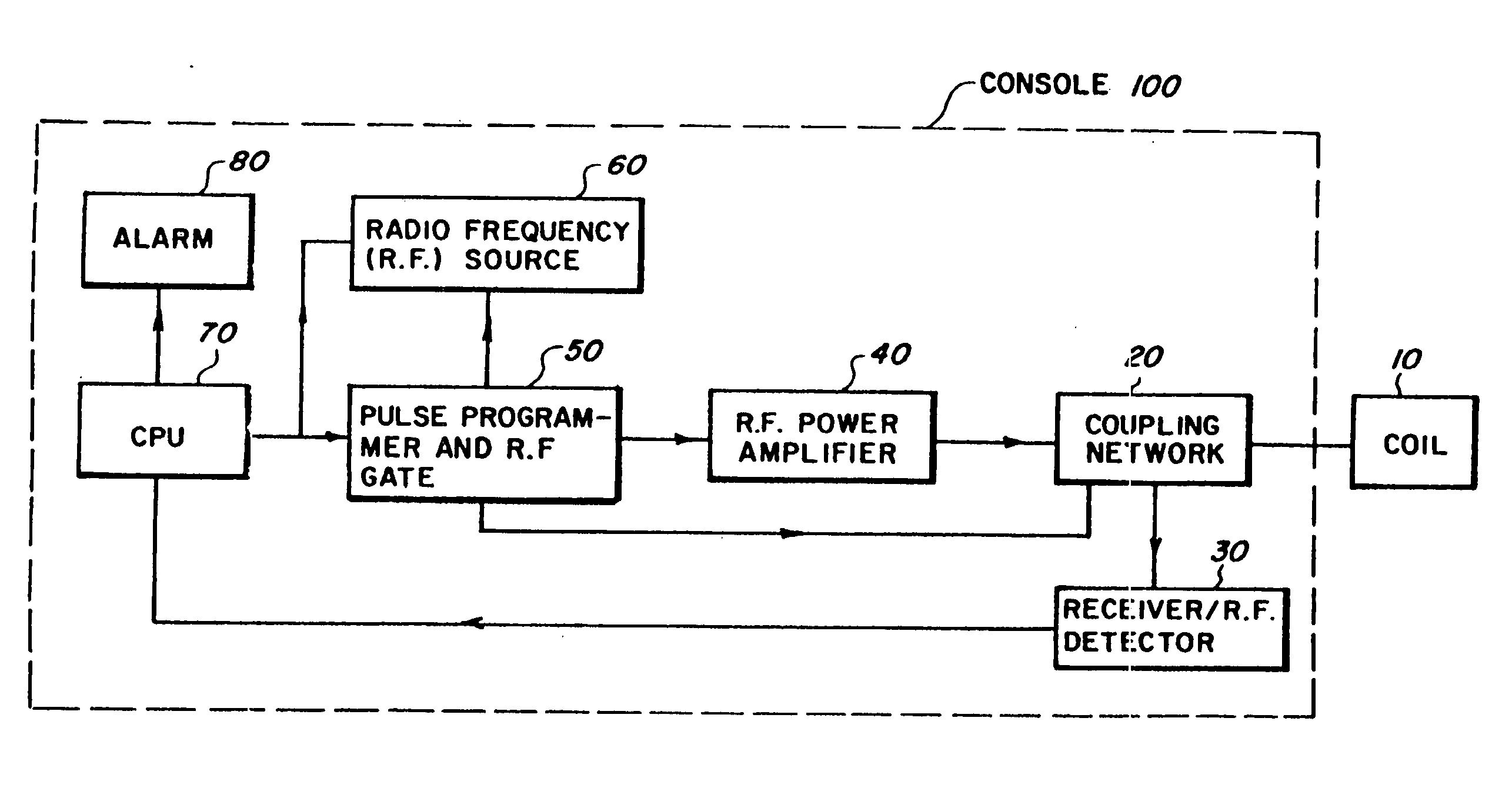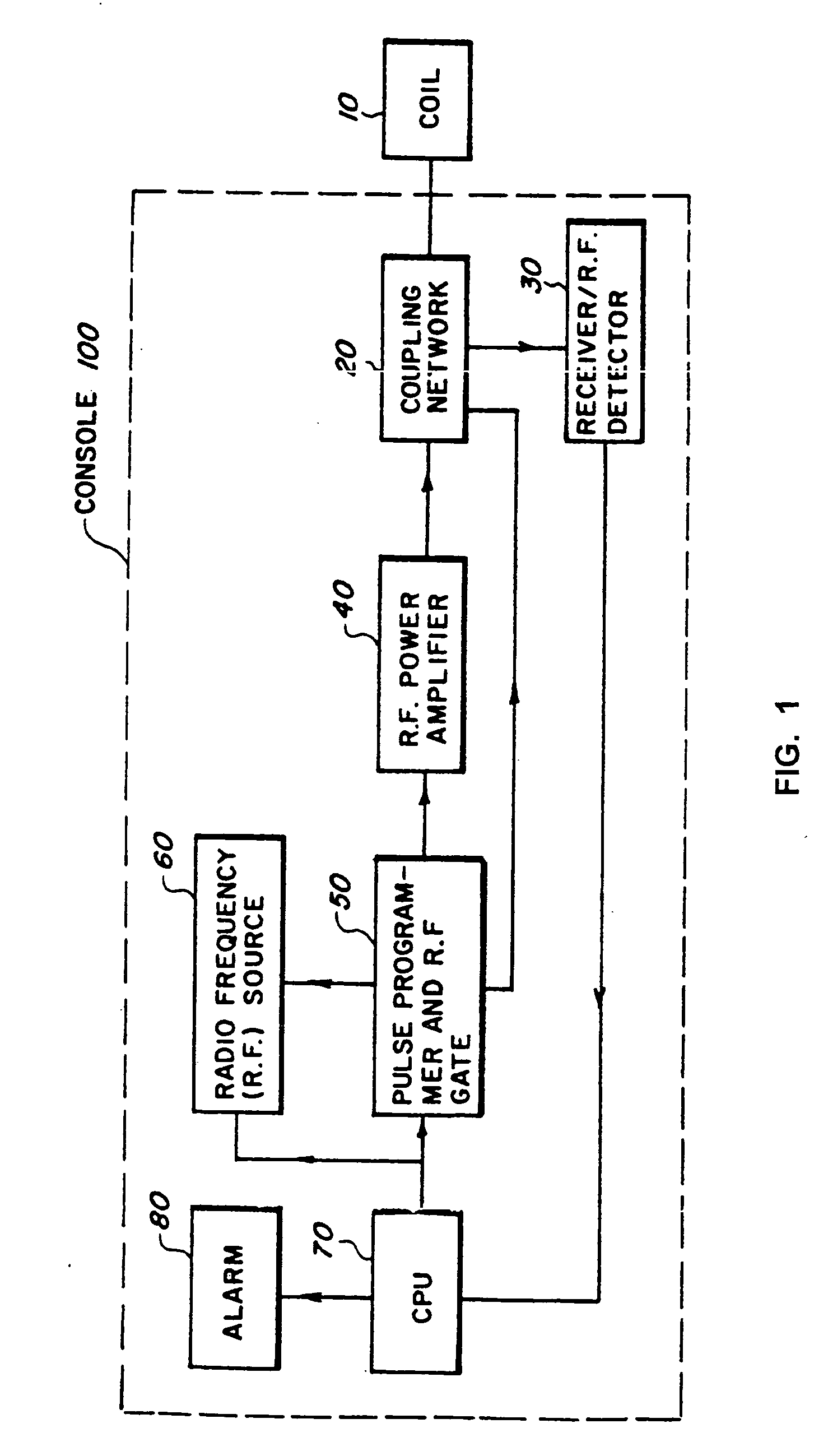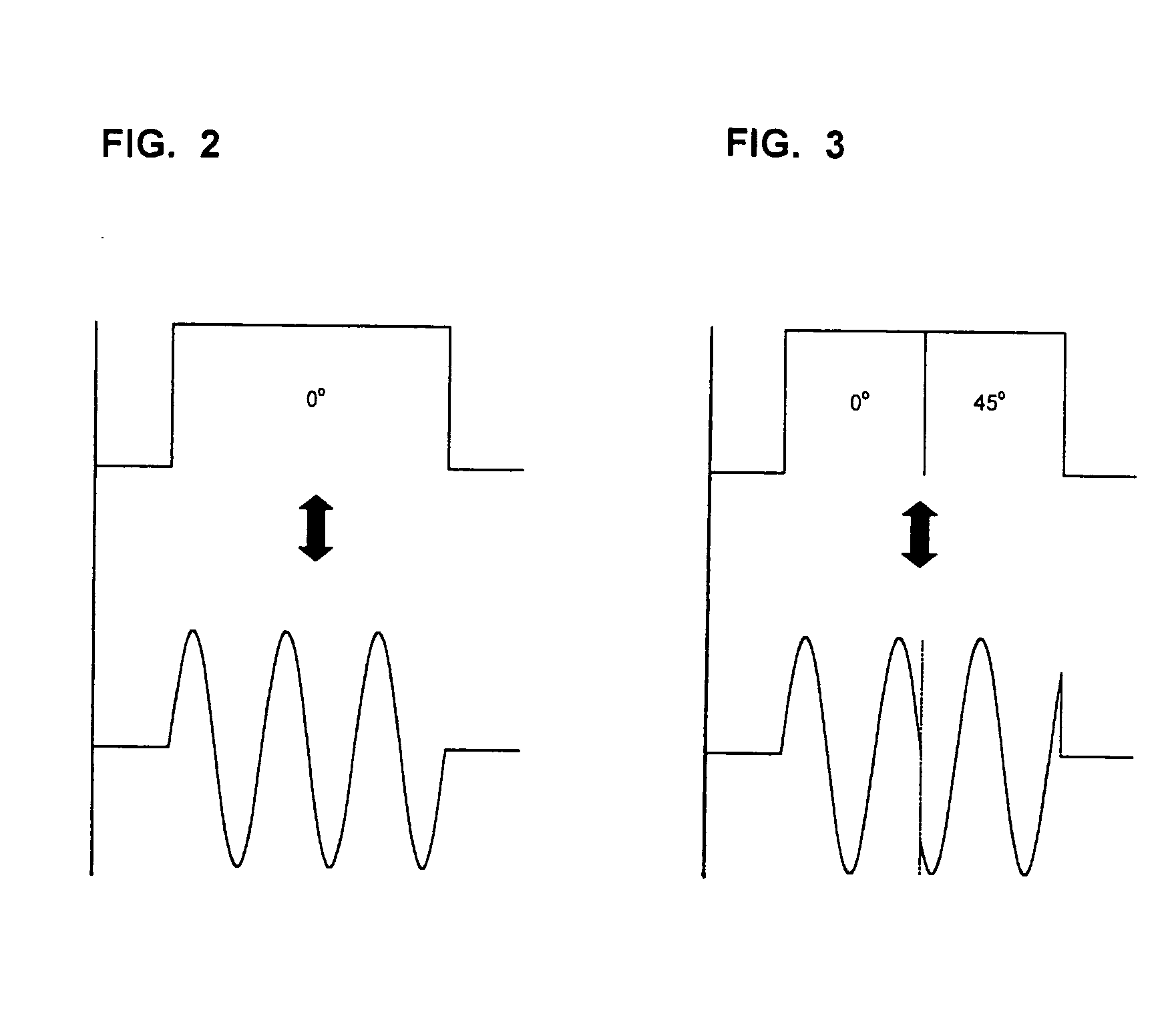Cancellation of ringing in magnetic resonance utilizing a composite pulse
a composite pulse and magnetic resonance technology, applied in the field of nuclear quadrupole resonance apparatus and method for cancelling ringing, can solve the problems of increasing false alarm rate, difficult if not impossible observation of true nqr signal, and rf pulse utilized in typical nqr detection sequences will induce acoustic ringing, so as to eliminate or cancel acoustic ringing, coil ringdown and piezoelectric ringing the effect of substantially reducing
- Summary
- Abstract
- Description
- Claims
- Application Information
AI Technical Summary
Benefits of technology
Problems solved by technology
Method used
Image
Examples
Embodiment Construction
[0019] In many magnetic resonance experiments, transient signals associated with coil ringdown, piezoelectric ringing and acoustic ringing completely dominate, making detection of the true signal from the nuclei of interest difficult if not impossible. Coil ringdown is directly related to the energy stored within the coil and has a time constant proportional to the probe Q. Piezoelectric ringing arises for situations where the object in the coil is a piezoelectric material and is caused by the oscillating electric dipoles excited by the electrical component of the RF field. Since for magnetic resonance it is the magnetic rather than the electrical component of the RF field that is essential, in principle the piezoelectric ringing can be reduced by proper coil design and electrostatic shielding of the coil. In practice, however, piezoelectric ringing can still be significant in a well-designed system. Acoustic ringing is a significant problem in the application of NQR to the detectio...
PUM
 Login to View More
Login to View More Abstract
Description
Claims
Application Information
 Login to View More
Login to View More - R&D
- Intellectual Property
- Life Sciences
- Materials
- Tech Scout
- Unparalleled Data Quality
- Higher Quality Content
- 60% Fewer Hallucinations
Browse by: Latest US Patents, China's latest patents, Technical Efficacy Thesaurus, Application Domain, Technology Topic, Popular Technical Reports.
© 2025 PatSnap. All rights reserved.Legal|Privacy policy|Modern Slavery Act Transparency Statement|Sitemap|About US| Contact US: help@patsnap.com



